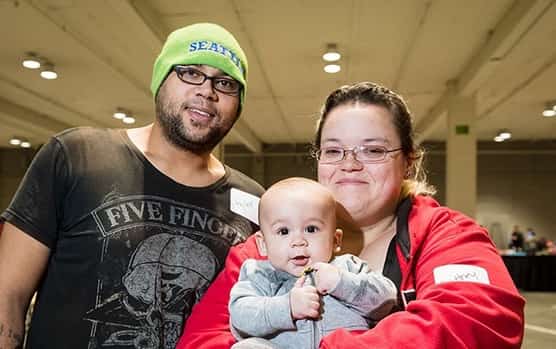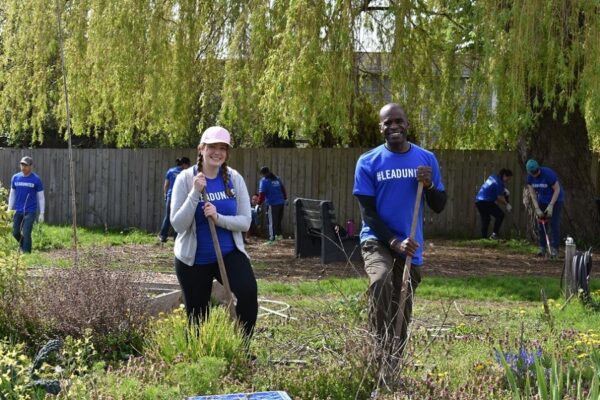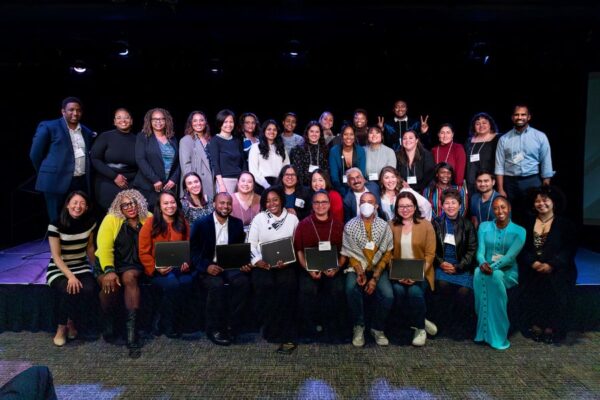Family Homelessness: Why Diapers Are Just The Start
Lydia Zavaglia is United Way’s copywriter, and mom to a 2-year-old boy and another on the way. Here’s her take on babies, diapers and family homelessness.
Ever changed a diaper in your car? It’s tough. There are YouTube videos on how to do it the absolute quickest, which is proof that it’s something to be avoided. To set the scene:
If you’re changing a diaper in your car, baby’s cold and likely ticked. You wish you had 7 more hands to help. You’re trying to keep baby from rolling off the seat while avoiding all “brown zones” while singing and shushing to calm said brown-zoned, cold, ticked baby.
Been there. They’re always a one-off babymergency. Most moms—and babies, I imagine—prefer to keep it that way.
But some parents have no choice. They live homeless in their car with their families. And diaper changes are one of many things that get that much harder.
Family Homelessness: How Many?
The 2017 One Night Count reported 2,833 families with kids as homeless in the greater Seattle area and King County. With November being Homelessness Awareness Month, it’s time to look closer at family homelessness.
Three percent of the 2,833 were living on the street or in a car, tent or abandoned building. It’s great that 97% were in emergency shelters or transitional housing. Three percent seems pretty low. But it’s still 85 families. 85 preschoolers. 85 babies maybe. And that’s 85 too many.
In addition, 1 of every 4 families said they were homeless because they’d fled domestic violence. Another layer of anxiety and difficulty.
At United Way, we talk a lot about family homelessness. About the huge number of homeless students in Seattle. How homeless shelters for families might even add to the trauma—but they’re doable, and that support is working. Families typically move quickly out of shelters into subsidized or other temporary housing, like Brittney and Tyler living with Tyler’s mom.
Families are a big part of all of our work to end homelessness. Despite that, I didn’t often consider the details of what family homelessness looked like until I had a kid of my own. Why?
I plain ol’ didn’t want to. Isn’t that true in general, where people experiencing homelessness are concerned? It’s easier to stay on the surface and look at the numbers, not the faces, and keep the stereotypes rolling.
Families Do This Every Day
Diapers. Diapers definitely count as day-to-day when you’re talking about little ones. Babies go through a lot of them and get a lot of diaper rash too. Changing diapers at night is its own gauntlet. With diapers also eventually comes potty training, accidents and unabashed potty-training toddler mutiny. It’s not a glamorous time.
And that’s just diapers. Bottles go rancid. Little ones eat with their hands and get disgustingly messy. Kids thrive on routine and a balance of sleep, play and calm.
In a house or apartment, this all gets tricky and frustrating and cramped. But in a car that doubles as your home?
Why are we OK with 2,833 families dealing with this?
Parenting is hard. That’s exponentially increased when something happens in your life—or a bunch of things happen in your life—that leave you no option but to live in your car.
This Homelessness Awareness Month, we #StandAgainstHomelessness for families living something most of us can’t imagine. We stand for moms and dads scaring monsters out from under glove compartments. And for kids doing their best to learn fine and gross motor skills with the car motor running to keep them warm and dry.
Can you relate to this post? You can help a family living in their car or staying in a shelter tonight. Donate toward a security deposit on an apartment for a family who just can’t catch a break. With your help, we can build a community where people—individuals and families—all have homes.





Comments